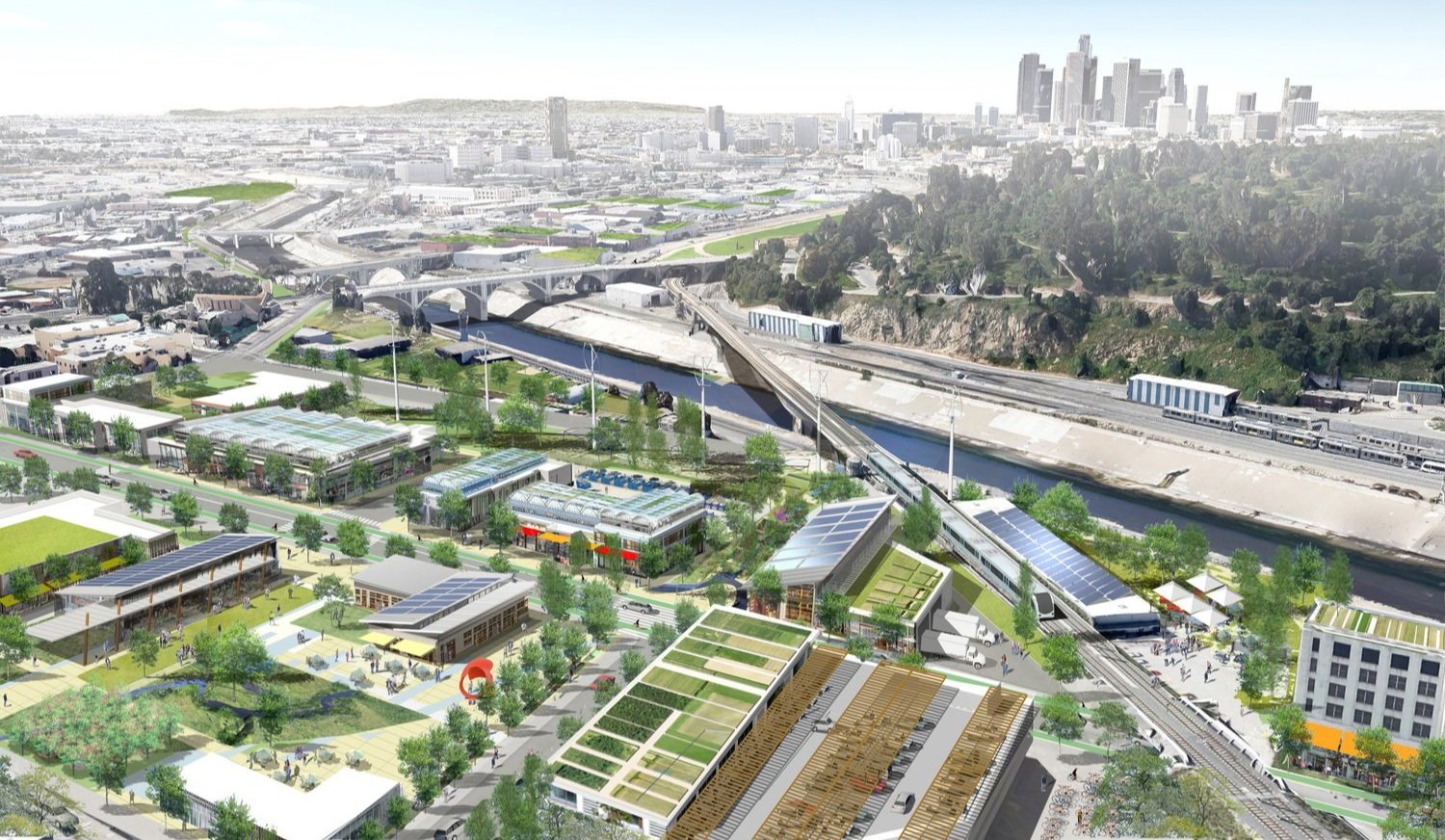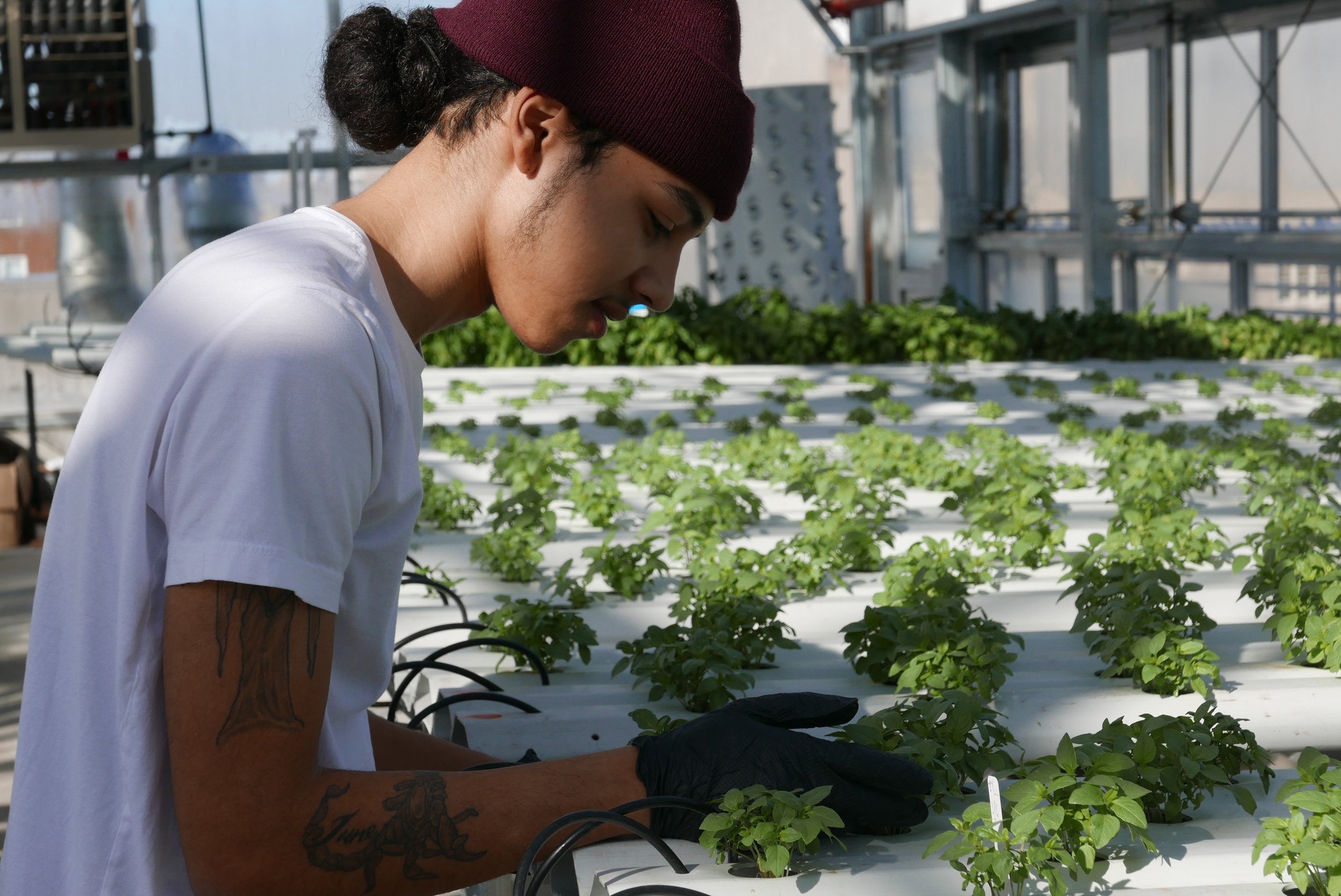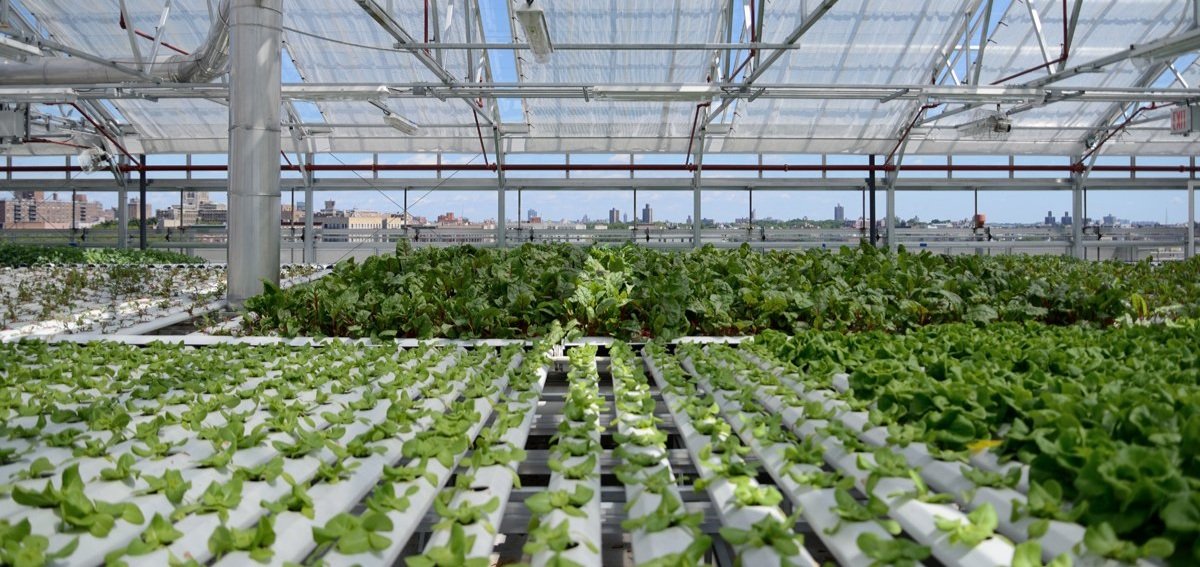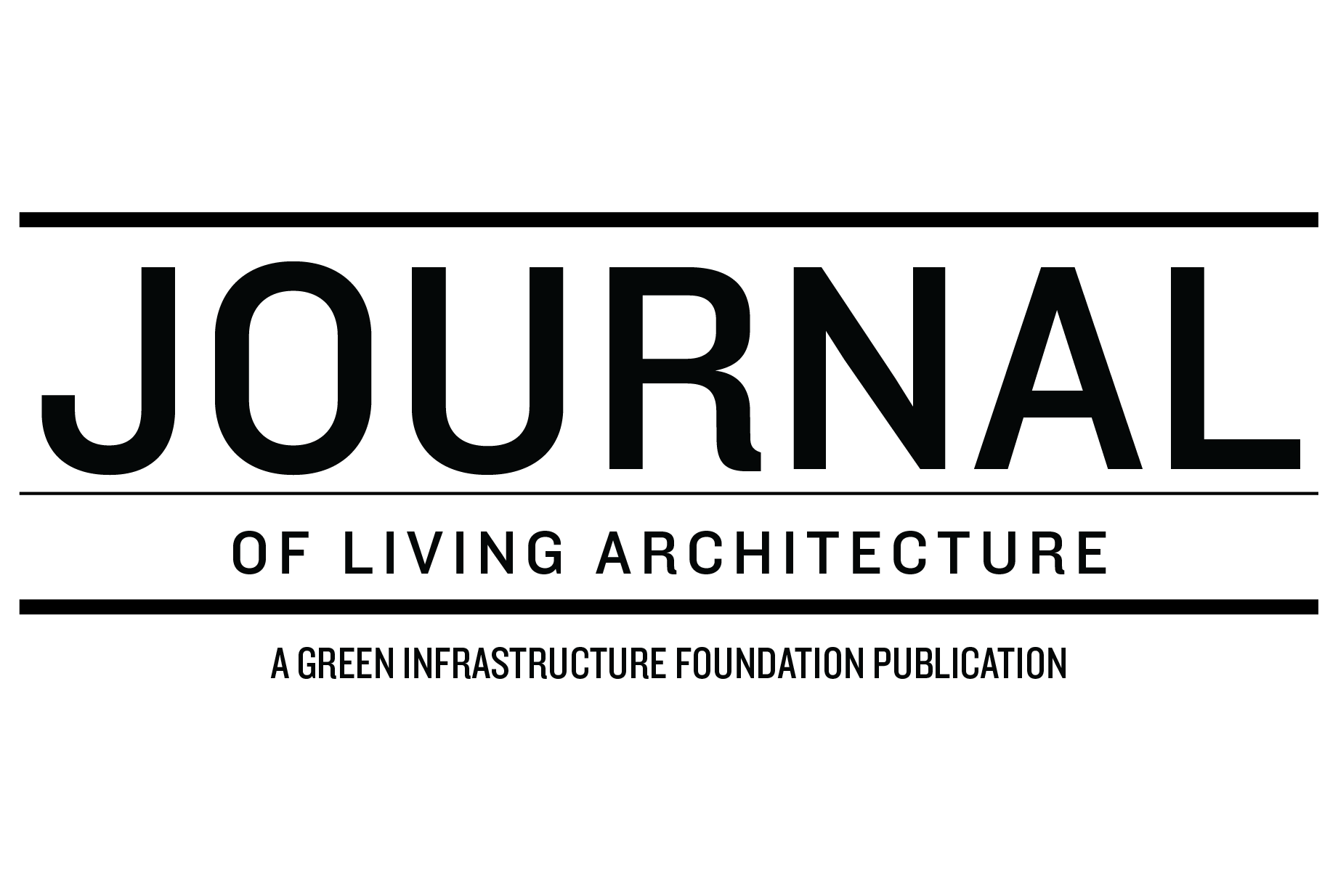On The Roof With Urban Agriculture Experts
Advertisement
Urban agriculture is a term used to describe a wide range of activities, from container gardening and agrihoods, to soil-based rooftop farms and high tech hydroponic indoor vertical farms. Agritecture in particular, refers to the design and operation of the built form in order to facilitate the growing of food. What is clear is that there is a growing appetite for producing more food in cities – in, on and around buildings. What is much less clear is how entrepreneurial talent and public policy can combine with design, planning and operation to encourage the scaling up of these developments. We spoke to three experts with different roles in the sector to try to seek answers. On The Roof With - Henry Gordon Smith, President, Agritecture, a global consulting firm; Roxanne Miller, Directrice, Soprema, which manufactures a wide range of green roof systems; and Antoine Trottier, Co- Founder, Ligne Verte, an urban agriculture services firm based in Quebec.
A vision of what strategically planning cities for urban agriculture could look like. Photo: Agritecture
1. Agritecture is a term which describes the integration of architecture and agriculture. What does 'agritecture' mean to you and what forces are driving its growth and evolution?
“Very often I see utopian renderings of futuristic cities filled with skyscraper farms. While inspiring, they tend to miss the mark on pragmatism.”
Henry Gordon Smith (HGS): It’s important that we don’t build and live in cities without having the resources needed for their citizens' basic wellbeing nearby. In the face of a changing climate, this principle is made even more crucial. In researching how cities could use agriculture to address environmental, social, and economic challenges, and develop resilient food systems, I coined the term “Agritecture.” It is the art, science, and business of integrating agriculture into the built environment. By definition, it is about applying architectural thinking when designing agriculture for the built environment. Very often I see utopian renderings of futuristic cities filled with skyscraper farms. While inspiring, they tend to miss the mark on pragmatism - in terms of financial sustainability, horticultural planning, and engineering. These farms are far from viable. And if they’re not feasible, how can they be sustainable?
Rooftop farm Sky Vegetables in NYC. Photo: Sky Vegetables
Roxanne Miller (RM): This term seems to be very conceptual to me. Yes, the green roof is part of the building envelope design, but the activities taking place on it, the cultivation, harvesting, all that work is full on agriculture. When the green roof is installed, its components are an integrated part of the architecture. On the roof, it is an actual farm, not a building. What is driving the development of agriculture on roofs now, is a sudden realisation, as communities, that local fresh food will be a necessity in various cases.
2. What role do you see urban agriculture playing in terms of helping us adapt the impacts of climate change, and do you see this role recognized in current policy responses? If it is not, then why do you think food security is not being addressed, relative to say flooding, or the urban heat island effect?
“Cities need to start looking at green spaces as a resiliency strategy and local food as a tool to de-risk from this centralized production system. The good news is that some are.”
HGS: Climate change is so threatening because it’s not just about one pattern of change but rather it is bringing more unpredictability, bigger swings, and challenging entire ecosystems. Urban agriculture is an ideal intervention because it really sits at the nexus of food, water, energy, and waste. Furthermore, it decentralizes production. So rather than putting all our eggs in one basket - for example, growing 99% of our leafy greens in two small regions (Salinas Valley, CA and Yuma, AZ), and then needing to import all of the inputs including water and energy into those regions just to export back out this end product, urban agriculture has the power to keep resources locally and distribute that production to hundreds of different hubs. This de-risks our overall food supply.
The short answer is no, most cities are not addressing food security proactively, but they should be. Cities need to start looking at green spaces as a resiliency strategy and local food as a tool to de-risk from this centralized production system. The good news is that some are. In February 2021, New York City released The New Agrarian Economy Report on the untapped potential of urban agriculture, laying out concrete proposals to encourage the growth of urban agriculture. Later that year, the City announced that it would establish an urban agriculture office and an urban agriculture advisory board.
Advertisement
“Unfortunately, the carbon intensity or footprint of food is not represented to consumers in grocery stores. Clients and consumers pick produce based more on price differences, than on the location where the food was actually produced. ”
RM: What is interesting here, is that the basic components of an urban agriculture rooftop farm and a semi-intensive green roof are the same, or very similar. They have the same water retention capacity and perform similar ecosystem services. A green roof farm is much more beneficial for the building, it’s occupants and the surrounding areas than just gardens in planters. If we use the actual green roof bylaws like the Toronto one and just start cultivating, finding that added value to a conventional extensive green roof is just one small step away. The complexity of rooftop farming lies in maintenance and hard work on the roof, which is why it might not be discussed as much as other benefits associated with green roofs.
Honey created on the IGA Duchemin rooftop farm. La Ligne Verte
Antoine Trottier (AT): If we take, for example, the fight against climate change, the only data really taken into account by the governments is CO2 production. Hence, urban agriculture projects are not fully recognized for their climate change benefits. Urban agriculture helps in sequestering carbon for example. Based on this principle alone, urban agriculture is much better than nothing. Furthermore, knowing the distance traveled by regular food is very great and therefore carbon intensive, rooftop farms are indeed saving a lot on equivalent CO2 emissions through import substitution. Urban agriculture will not have as significant an impact in the climate change fight because it doesn’t reach the minimal requirements to be converted into carbon points through the policies and programs existing today. The policies and programs and the funding that comes with them, should recognize urban agriculture’s multiple emission reduction benefits.
Unfortunately, the carbon intensity or footprint of food is not represented to consumers in grocery stores. Clients and consumers pick a product based more on price differences, than on the location where the food was actually produced. On top of that, there are no certification of carbon or labelling requirements of the equivalent CO2 that are associated with the full production/delivery cycle of specific items – essentially no carbon intensity labelling. If we had policies that supported these types of advertising and labeling, it would probably have a big impact on how we choose to buy our different food items.
3. Which jurisdictions are leaders in policy development related to urban agriculture and agritecture projects and why?
HGS: There are lots of examples and each one is doing it its own way, but here are a few that stand out:
Singapore - the Singaporean Government has established urban agricultural educational & training programs for locals, and incentivizes developers to include urban farms as part of their new green building requirements.
Paris - the Parisculteurs initiative has been working to cover unused spaces like rooftops and walls with vegetation. The program helps maintain biodiversity, whilst allowing us to address issues of urban space re-naturalisation.
Atlanta - the first major US city to hire a director of urban ag within the Mayor’s Office and really integrate urban farming into the broader food access and local food conversation.
Dubai and Abu Dhabi - the new Food Tech Valley is an integrated modern city that will serve as a hub for future clean tech-based food and agricultural products.
Victoria, BC, Canada - the “city of gardens” - they embrace this nickname with some great non-profits and a food systems coordinator that has led or supported several initiatives to strengthen the capabilities of community gardens and even home gardeners to grow their own food.
AT: The City of Vancouver has already and for some time now integrated urban agriculture in their urban development plans and specific bylaws. Montreal recently nominated a project manager for the development of urban agriculture. AULab, is a research group associated with University of Québec At Montreal which helps municipalities in Québec put into place urban agriculture programs. They also developed a networking and coupling program called Montréalculteurs, very similar to ParisCulteurs. It is a platform where owners put their building or land up for use by farmers that will be able to cultivate those sites. We are expecting a very real comeback from all these initiatives.
Hats off to cities like Toronto that put in place a mandatory green roof bylaw! To convert an extensive green roof into a rooftop farm is much easier than to start from a standard roof.
Rooftop farm Sky Vegetables in NYC. Photo: Sky Vegetables
Advertisement
4. What are the biggest challenges to more rapid growth of urban agriculture, and agritecture in particular?
HGS: The world needs more entrepreneurs dedicated to improving agriculture through technology. But without the right data and strategy, they face an uphill battle to do it sustainably. With the average age of farmers rising around the world (59 years in the US), one of the exciting things about urban agriculture is that it is attracting young people to farming, however, many enter without much or any ag experience. According to our 2021 Census, 41% of Controlled Environment Agriculture (CEA) founders had no prior agricultural experience (49% in the prior year’s census). Given this, entrepreneurs need better support to guide their decision-making and avoid costly and time-consuming mistakes. Our 2020 Census found that 73% of founders regretted decisions related to the crop, equipment, and/or technology they selected initially. As a result, this profile needs more ag-related support and expertise when it comes to designing their farms and then again in the early months/years of operation.
Leafy greens growing on the IGA Duchemin rooftop farm. Photo: La Ligne Verte
We’re seeing incredible year-over-year investment and growth in these mega indoor farms right now that are supplying mostly salad greens through traditional sales channels - distributors and major retailers. But for urban agriculture to really thrive, we need other innovative models to also be able to succeed, in terms of scale, distribution channels, and especially products. Companies like Smallhold, Farm. One, and We Are The New Farmers, are all great examples - growing new products at varying scales and some going direct-to-consumer.
And of course, we need supportive public policies - cities need to take the initiative to transform food systems by putting urban agriculture on their agenda. In our 2019 Census, 45% of respondents noted “educating the local government about urban agriculture” as a critical need. We want to help cities be more active in policy initiatives as well as set clearer goals via the establishment of strategic plans for local agriculture.
RM: Lots of keywords come to mind: Stronger buildings, more knowledge of how to cultivate a rooftop farm, more knowledge of all materials and logistics specificity needed to produce and exploit to a maximised result. These are just a few examples of what we need to make this more normalized.
AT: Farming is a very tough trade. It requires a lot of energy, knowledge and patience and it is completely dependent on climate. It will not be possible to ask the farmer that they handle the project from design to farming. Without financial support, it is not realistic or even doable. A governmental initiative will have to be put into motion in order to help the development of infrastructure that will be ready to be farmed, and to provide financial support to projects and technical support as far as the building envelope goes.
5. What future trends do you see for agritecture project development?
“There is also an educational aspect that really needs to be developed for wide spread growth. We need the students, both undergraduates and graduates, high school, elementary school to learn about urban agriculture. ”
RM: I believe agritecture will bring forth more large scale projects in the future. There is also an educational aspect that really needs to be developed for widespread growth. We need the students, both undergraduates and graduates, high school, elementary school to learn about urban agriculture. We will also need schools to implement projects on their facilities.
AT: I truly hope that more, better and bigger urban agriculture projects emerge, in all of their forms, whether on a roof or not. We have to continue to show that it’s not only possible, but also necessary.
HGS: According to our 2021 Global CEA Census, 70% of CEA operators believe the industry has been susceptible to excessive greenwashing, and energy use is the biggest culprit. We need to see more CEA project developers taking renewable/resilient energy sourcing seriously. Secondly, we believe urban agriculture will become crucial to master planning projects. We’re already seeing this interest with NEOM’s Food Innovation Hub, Dubai’s Food Tech Valley, and OCEANIX’s partnership with UN-Habitat and the city of Busan. These solutions truly integrate agriculture into the urban development process and as a result will foster a culture of local food.
Thirdly, with the numerous barriers for entrepreneurs to enter this industry and establish viable farming operations, farm planning will go more and more digital. Agritecture’s farm planning software, Agritecture Designer, has modeled over 500 greenhouses and vertical farms so far, giving entrepreneurs numerous tools to take on the challenge of planning their urban farms successfully. These include: a master class providing the foundational knowledge for anyone planning an urban farm, tools that can help estimate farm financials, and access to trusted equipment and financing partners. Neat digital tools like this exist in other growing sustainable farming niches as well, such as agroforestry.
Advertisement
Henry Gordon Smith, President, Agritecture. With a mission to accelerate and empower the transition to smarter and more resilient agriculture, Agritecture’s global team of interdisciplinary consultants pushes entrepreneurs to use data-driven strategies to create economically feasible projects that are more resilient to climate change. To further support entrepreneurs, in 2020, they launched a software platform for planning urban farms, Agritecture Designer.
Roxanne Miller, Directrice at SOPRANATURE® Canada, has been intimately involved in the award winning IGA Duchemin rooftop farming project and has worked on green roofs in Quebec and across Canada.
Antoine Troitter is the co-founder of La Ligne Verte, a company that specializes in multiple forms of urban agriculture, and operates the IGA Duchemin farm in Montreal, Quebec.












